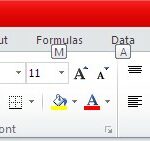How to Use Excel Fast: A Guide for Beginners and Advanced Users
Excel is a powerful tool that can help you organize, analyze, and present data efficiently. Whether you’re new to Excel or looking to sharpen your skills, this guide will walk you through essential tips and tricks to use Excel quickly and effectively.
For Beginners
Get Familiar with the Interface
Open Excel and explore the Ribbon, which contains tabs like Home, Insert, Page Layout, Formulas, Data, Review, and View. Learn about the Workbook, which consists of Sheets. Each Sheet is a grid of cells.
Basic Navigation and Data Entry
Click on any cell to select it. Type to enter data. Use arrow keys to move between cells quickly. Press Enter to move to the next cell below, or Tab to move to the next cell to the right.
Simple Formulas and Functions
Start with basic arithmetic: =A1+B1, =A1-B1, =A1*B1, =A1/B1. Learn basic functions like SUM, AVERAGE, MAX, and MIN. Use the AutoSum button on the Home tab for quick totals.
Formatting Cells
Select cells and use the options in the Home tab to change fonts, colors, and borders. Right-click for quick access to formatting options like Number Format (currency, percentage, date).
Creating Simple Charts
Select your data range. Go to the Insert tab and choose a chart type (Column, Line, Pie). Customize your chart with Chart Tools that appear once a chart is selected.
For Advanced Users
Advanced Formulas and Functions
Explore functions like VLOOKUP, HLOOKUP, INDEX, MATCH, and IF statements for more complex data manipulation. Use nested functions to combine multiple operations.
Data Analysis Tools
Use PivotTables for powerful data summarization. Go to Insert > PivotTable, select your data, and arrange fields in the PivotTable Field List. Use Data Analysis tools (Data tab > Data Analysis) for statistical analysis like Regression, ANOVA, and Descriptive Statistics.
Conditional Formatting
Highlight important data dynamically. Go to Home > Conditional Formatting. Set rules based on cell values, text, dates, or use formulas for custom rules.
Macros and VBA
Automate repetitive tasks with Macros. Go to View > Macros > Record Macro. Learn basic VBA (Visual Basic for Applications) to write custom scripts. Access the VBA editor with Alt + F11.
Collaboration and Data Sharing
Share your workbook with others using the Share button on the top-right. Protect your workbook or specific sheets with passwords. Go to Review > Protect Sheet/Workbook. Use Excel Online for real-time collaboration.
Practice regularly, and don’t hesitate to explore Excel’s extensive help resources and online tutorials like mine.



